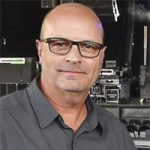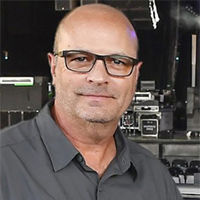When we start on the path to becoming a skilled live sound engineer, it doesn’t take long to realize that there’s a lot of equipment and software, as well as techniques and protocols, that must be learned. Acquiring experience with gear and software is very important, but one skill that’s sometimes overlooked – yet takes years to master – is the art of listening.
Listening to tone and balance as it relates to equalization, but also listening for abnormalities like distortion, buzz noise and hiss. It’s also important to recognize polarity and phase-related problems. Well-trained and experienced audio engineers learn to instinctively “know” what they’re hearing and to quickly judge what adjustments need to be made to improve things, while a younger, less-experienced mixer may have trouble even deciding where to start to get things moving in the right direction.
Let’s have a look at some topics related to critical listening and what to do with the information our ears are taking in.
Frequency Recognition
One of the most important skills to learn as a young audio engineer is frequency recognition and tonal balance. Like any other skill, repetition and practice go a long way, so if you’re just starting out in this business, don’t expect your ears to be “golden” right from the get-go. I started mixing live sound in 1981 in the clubs of western Canada. I quickly learned that by training myself to identify frequencies to shape the sound of an instrument or sound system, I would get much better at this very difficult job much quicker.
I figured out that what I needed was a way to practice, so one night at 3 am, when the club my band was playing in closed up, I recorded a “frequency recognition” cassette tape. The club owner was very cool and let me hang around to produce this tape.
My setup was a bit antiquated, to say the least, but it got the job done. I placed a vocal microphone in front of the two PA stacks and turned it up to a level just shy of feedback at multiple frequencies. I also had a talkback mic in the console going only to the record bus.
I then hit “Record” on a cassette tape recorder and began by boosting a frequency on the third-octave graphic EQ until it initiated “hanging” feedback at and around that frequency. I let this hang for a few seconds, brought it back down, gave myself a couple seconds to guess, then identified the frequency via the talkback mic on the recording. I randomly moved up and down the frequency spectrum (200 Hz, 1 kHz, 4 kHz, 100 Hz…) – boosting, pausing, then “announcing” the correct answer on the recording.
I continued with this routine for 30 minutes or more, and ended up with a tape that I could play on my Sony Walkman (oh yeah, I’m that old) to practice frequency identification whenever I was away from a PA system. This proved particularly helpful when I started mixing monitors and the components were all wedges and side fills, and I believe it paid dividends for years to come when I started mixing more at front of house.

Many people have asked me why I didn’t just use a tone generator to randomly produce various frequencies. The main reason is that instruments and vocals are not made up of just one frequency even if a single note is being played or sung. There are harmonics and overtones that are part of that note and make music sound like it does: complex and layered.
For this reason, I wanted to learn to identify frequencies in their “natural habitat” with all the harmonics happening along with the single boosted frequency. I discovered that as I boosted 400 Hz on the graphic, the vocal mic pointing directly at the PA stacks would start to pick up, amplify and feed back at several frequencies at various intensities.
Harmonics of 400 Hz would start to “hang” as well. Anyone who has talked into a vocal mic in front of a “hot” monitor wedge knows this while learning the art of “ringing out” stage monitors. As you cut a frequency to stop feedback, another will rear its ugly head and want to take off. It’s a cat and mouse game to be certain. The approach that gets the feedback under control and the vocal sounding like a voice is most often a “shaping” of the frequency response with incremental cuts (and maybe a boost or two) at several frequencies.
The big picture takeaway from my frequency practice cassette was that in order to deliver a balanced, full-frequency mix at FOH or on stage, I needed to not only recognize frequencies singularly, but also in “regions,” and further, to understand that sometimes the best EQ technique is broad-stroke adjustments, not just tiny “tweaks.”
Let’s look at an example of this in the real world. You’re a new, up-and-coming FOH engineer mixing for a band that’s playing a theater with an installed system. You’re all set to test and tune the PA and you start by simply speaking into a familiar mic at FOH through the main loudspeakers. If you haven’t tuned PA systems at this point, you might ask, “What is it I’m listening for and where do I begin?” Great questions, and ones I asked myself a lot when I started out.
With years of experience I’ve learned that the first goal is getting a feel for the balance and frequency response of the system from 20 Hz to 20 kHz. A “widescreen audio picture” of the balance of subs, lows, low-mids, high-mids and highs through the loudspeakers in the room. It’s key to recognize that the room plays a huge part of the final tonal outcome and will factor into the equation of how you equalize and optimize the PA.
Your thought process may start something like this: “Wow, there’s a lot of low-mid and low frequency boominess to this system, and the highs seem distant and dull.” That’s a great first impression and provides a workable place to start. You can micro-analyze things later but go with that first gut instinct and work on balancing the sonic spectrum before doing much more.
Simple broad stroke moves are my favorite initial adjustments. When listening to an electric guitar amp in the PA, I may think, “This sounds really bright and lacks warmth and chunk.” My first moves would be a fairly wide mid-high cut coupled with an alternate boost around 250 Hz. With practice, our ears will get better, and we can be quicker to know what to do to improve the sound of a system or instrument.















